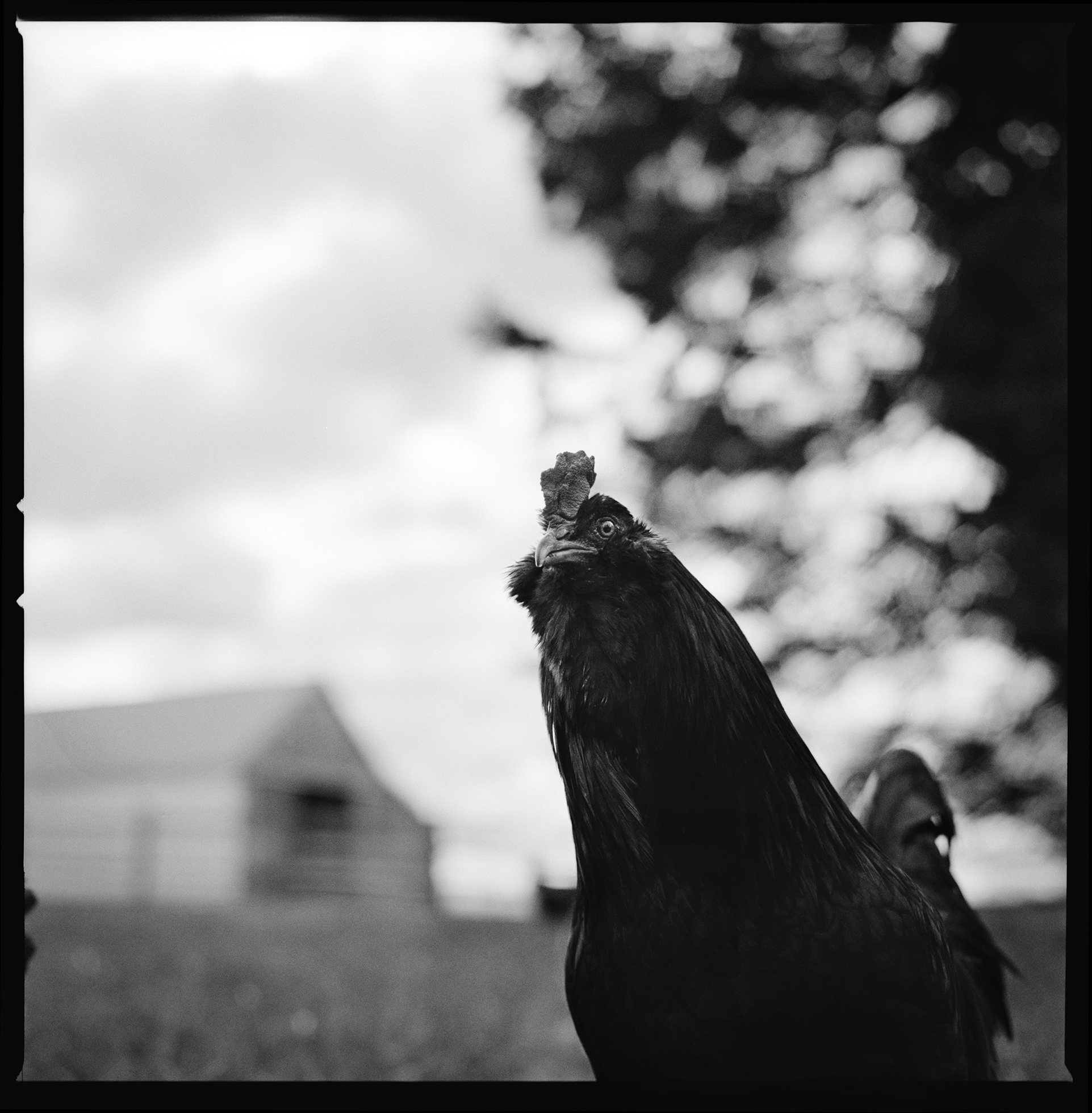I have a rooster named Henry. He is what’s called a “Barred Rock,” which means he is white with black specks — or maybe black with white specks; it’s hard to tell. In his large and elegantly plumed tail he has one iridescent green feather. The spurs on the back of his legs are two inches long and come to sharp points. He has a brilliant red comb and red wattles and is, all in all, a handsome rooster. Sometimes parents who walk by on the road with their kids stop to admire him.
I also have six hens: three Rhode Island Reds, two Plymouth Rocks, and one Ameraucana. Henry is every inch the master of this flock, keeping them in line with a stern and impatient passion. In the morning, when I first let them out, he shows them who is boss by picking up a twig in his beak and waving it in the air. Then he drops the twig and swipes his beak back and forth on it, as if sharpening a blade. When he wants to mate with a hen, he comes up next to her and stamps sideways, and she crouches so he can mount her and consummate the act in a flurry of wings. I am told he has no penis and performs his male function with a cloaca — a pink, petaled orifice for feces, urine, and sperm. He presses his cloaca to the hen’s cloaca (a cloacal kiss), and in this instant, fertilization can be achieved. The sex does not appear very satisfying to the hens, though they submit readily enough. The biggest problem is that Henry’s large claws and wicked spurs rake the hen’s back and leave a bald spot next to the tail. You can tell which hen is Henry’s favorite, because almost all the feathers are worn off her back. She is so bedraggled-looking it’s hard to know what he sees in her. I wonder if she is cold in winter, and I have seriously considered knitting a sweater for her but am unable to find a suitable pattern.





